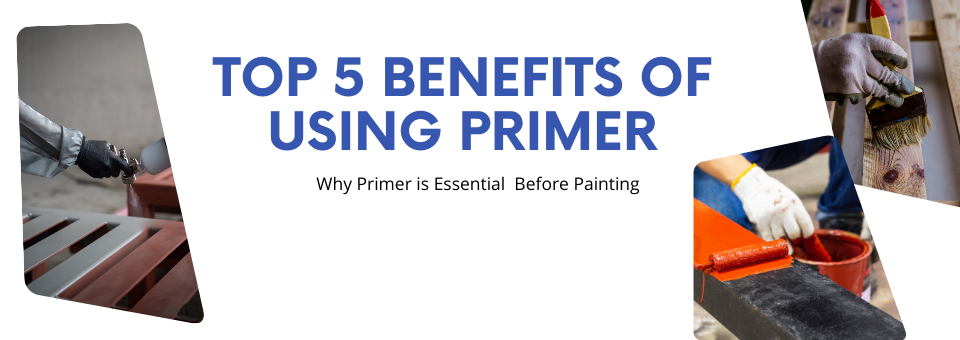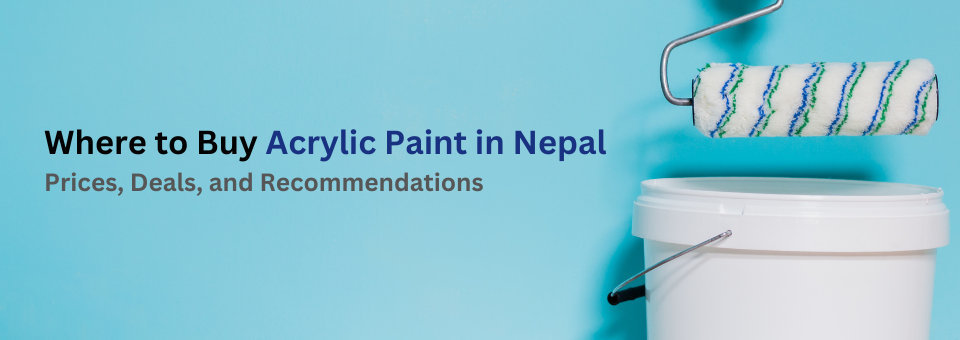
Why Primer is Essential Before Painting: Top 5 Benefits of Using Primer
Picking the right color is a big deal when painting your home or furniture. However, using the primer is the first step to consider while painting. Primer prepares the surface for paint and helps it stay durable for a longer time. It can even save you some cash in the long run. In this blog, we will further explain the benefits of primer.
Table of Contents:
What is a primer?
Why Do You Need to Use Primer Before Painting?
Top 5 Benefits of Primer
Improved Paint Adhesion
Covers Stains and Damage
Saves Paint and Cash
Smooth Finish
Improves Color Accuracy
How to Pick the Right Primer Paint
Different Types of Primers at KNP Nerolac Paint
Wood Primer
Exterior Primer
Red Oxide Metal Primer
Aluminum Paint
Conclusion
FAQs
What is a primer?
Primer is the base coat applied to a surface before the final paint. It is used to conditionally prepare a wall or surface for better holding of the color paint. It's the undercoat or foundation for the painting, resulting in longer-lasting paints.
Why Do You Need to Use a Primer Before Painting?
Many people skip primer for the sake of time or cost. However, primer is required to get a better, long-lasting paint job. If negligence is done, the paint will begin to peel, crack, or simply not look even. Sometimes, the surface absorbs too much paint, resulting in wastage, thus wasting both paint and money.
Top 5 Benefits of Primer
Here are the top five benefits of primer paints.
Improved Paint Adhesion
Paint sticks to the surface well with primer. It means no peeling or chipping of paint. If you apply a coat of paint directly onto an unprepared surface, it won't stick as well and may come off quickly.
Covers Stains and Damage
Are there old stains, water damage, or marks on your wall? That doesn't matter; primer will stop them and make the wall look clean and fresh.
Saves Paint and Cash
Its primary use is sealing off areas that would otherwise soak up too much paint, thus wasting paint and money.
Smooth Finish
This is accomplished by filling in the small cracks and imperfections within the wall to give the paint a smooth and beautiful finish after it dries.
Improves Color Accuracy
Primer provides a neutral base that helps the true color of the paint shine. It prevents dark or bright old colors from affecting the new shade. What you see on the paint can is what you'll get on your wall.
How to Pick the Right Primer Paint
Selecting the right primer makes the most of it. You can consider these tips:
● For wood, a wood primer will keep it from warping.
● For metals, a primer protects them from rust.
● It's best to apply a general primer for new walls, which works for plastered or dry-walled surfaces.
You should reach for a stain-blocking primer in case of stains on your wall.
Different Types of Primers at KNP Nerolac Paint
You should be able to find many good primers at reputable brands like KNP Nerolac Paints. They have good primers for different surfaces.
Wood Primer
This is for wooden surfaces. It soaks deep into the wood and provides a strong base for painting. The paint gets a quality bond, which adds to its life.
Exterior Primer
Exterior wall primer has a smooth and uniform finish because it is based on water. It is low in odor, eco-friendly, and good for the environment.
Red Oxide Metal Primer
This red-colored primer is applied to metal surfaces. It protects from rust and serves as a good base for paint. It helps minimize the risk of peeling and cracking.
Aluminum Paint
Shiny aluminum-colored paint protects metal from rust. It provides a smooth metallic appearance with a long-lasting effect.
Conclusion
Using primer paints offers numerous benefits, such as better paint adhesion, stain blocking, paint savings, a smooth finish, and wall protection. Always put primer on first if you want a beautiful paint job that will last a long time. While it requires more time and expense, the results are worth it.
Are you ready to paint? Don't forget to invest in a good primer to get the best results. Protect your home, save money, and make your paint job last much longer with quality primer paints from KNP Nerolac. Start your painting right now.
Visit the KNP Nerolac Healthy Home Paints for more information.
FAQs
Is primer necessary before painting?
Primer is crucial for strong paint adhesion, smooth coverage, and a long-lasting finish. Skipping primer can lead to peeling, uneven color, and higher paint consumption.
Can I use primer on any surface?
Different surfaces require different types of primer. For example, use wood primer for timber, metal primer for iron or steel, and general-purpose primer for new or repaired walls.
How many coats of primer should I apply?
Usually, one coat is enough. However, a second coat may be necessary for stained, dark-colored, or highly porous surfaces.
KNP Nerolac Paints, a leading paint company in Nepal offers a wide range of wall paint colours & painting services & solutions for homes & offices.
-
Recent Blogs
- Top 5 Mistakes to Avoid While Using Primer Paints
- Why Primer is Essential Before Painting: Top 5 Benefits of Using Primer
- Wall Putty Price in Nepal 2025: Types, Benefits, & Buying Guide
- 5 Exterior Paints of 2025: Long Lasting Protection & Stunning Curb Appeal
- Say Goodbye to Cracks: Why Wall Putty Paints Are a Must for Every Home



